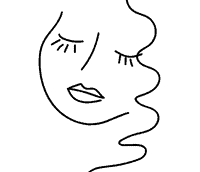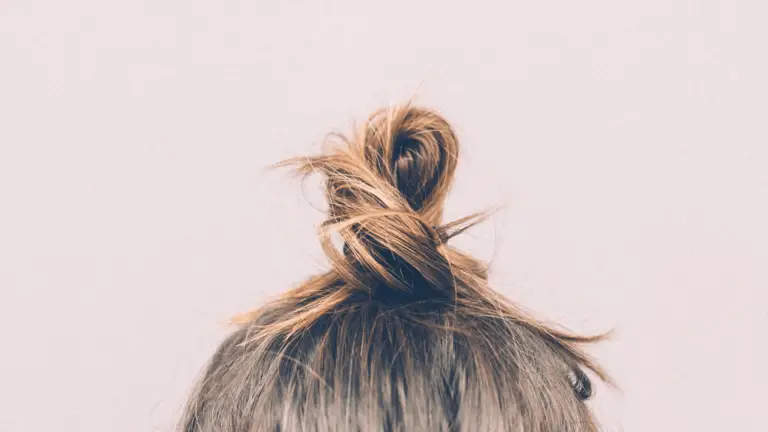The question of how to get deeper sleep has occupied my mind A LOT lately, because… you guessed it, I’ve not been getting enough of it.
So I decided to finally tackle the issue and try to find out what are the most basic and effective ways to sleep better. Really foundational stuff and not just the usual chamomile tea and relaxing yoga poses spiel. I discovered a lot of interesting things, which I’m now sharing with you.
First, I’ll go over very basic sleep 101. Then I’ll lay out the 10 simplest steps you can follow to hack your body into an excellent night’s sleep and adjust your circadian rhythm in just 3 days.
Some of these you may already be doing, but I can almost guarantee there’ll be one or two you’ve never heard of. If you’re curious, read on.
How is sleep important?
Sleep is absolutely vital for your health and life – quite literally, if you’re unable to sleep, you die. It’s through sleep that the body is able to perform most of its daily repairs and maintenance. This is why you wake up (or should) feeling refreshed and ready to go.
Without proper sleep, whether because it’s too short in duration or because it’s of poor quality, your brain cannot function properly. Since the brain controls and regulates every single metabolic function in the body, this is a recipe for disaster. You absolutely NEED a proper amount of good quality sleep.
Major negative health consequences aside, sleeping well ensures you’re alert, focused and more emotionally stable during the day. It’s important for your mood and wellbeing, so that you can put your best self forward in all aspects of day-to-day life.
What can affect your sleep?
There are many things that can affect our sleep negatively. Among them are:
- irregular sleeping hours (going to bed at different times, waking up at different times)
- stress and anxiety
- poor diets or bad eating habits
- unhealthy lifestyle choices
- medical conditions
…it’s a very long list.
Related content: The Essential Habits For Healthy You REALLY Need!
How much sleep do you really need?
This varies a lot between individuals, but anywhere between 7 to 9 hours is considered optimal for adults (more than that for children and teenagers).
However, it’s not just the length of time – those sleep periods have to be fairly uninterrupted. If you keep waking up, you will feel tired and groggy in the morning.
In order to feel rested and refreshed (good sign of a healthy sleep period) you need that sleep period to reach deep sleep or slow wave sleep stages. That is when the body truly does its repairs.
What are the stages of sleep?
There are 4 different stages consisting of rapid-eye-movement (REM) and non-rapid-eye movement (NREM) stages, which the body cycles through, on average 4 to 6 times per night. It spends about 90 minutes in each cycle.
The first 3 stages are NREM, where breathing, heart rate, and brain waves progressively slow down, relaxing the muscles in the body.
That third stage of NREM will be the deepest and most restorative to the body.
After that comes the fourth stage, which consists of REM sleep. In this stage the eyes are perceived to make rapid movements under the lids and there is a slight increase in heart rate, breathing rate, and blood pressure.
This is also the stage during which we dream and that has been found to have a strong connection to memory consolidation.
Are naps good or bad?
Provided they are between 20 minutes to 1 hour, naps can be helpful, although they’re not necessary.
If you wake up groggy after a short nap, it’s possible that you’re not sleeping very well at night and are falling into deep sleep too quickly during your naps.
What regulates your sleep?
Like I mentioned, sleep has many variables, but it’s controlled primarily by 2 major forces or clocks.
The first one is the circadian rhythm of the body. This is the body’s own internal clock which operates on a 24 hour cycle. It governs the release of cortisol in the morning, which wakes us up, therefore timing the release of melatonin to about 12 to 14 hours later, which will make us feel sleepy and ready for bed.
The second major force responsible for timing the sleep-wake cycle is chemical, through the buildup of a neurotransmitter known as adenosine. This neurotransmitter is at its lowest level upon waking and starts to buildup organically (hourly) in the system throughout the day.
This acts as second timer and also helps the body know when it’s time to sleep. During the sleep period, adenosine will be reset so that you start the whole process again the next day.
Making sure you’re properly timing these two essential clocks is the key in how to get deeper sleep.
Related content: Cycle Syncing For Glowing Skin, More Energy, Better Sex
HOW TO GET DEEPER SLEEP
The number one most effective factor on how to get deeper sleep is to properly reset your circadian rhythm and stop doing things that mess with it!
What are the actual steps?
1 – View light in the early morning and at sunset
This is the number one step on how to get deeper sleep in every way possible – it’s the foundation of proper sleep.
The 12-14 hour rhythm of melatonin and cortisol release that times the sleep-wake cycle is entirely endogenous (internal) and continues even if the body is in complete darkness or complete light.
However, the setting of the times can be influenced by other factors – the absolute biggest one of those factors is light, especially sunlight.
How does that work?
The light is perceived through the retinas in the eyes, which are technically brain tissue that is outside your skull!
The type and intensity of the light perceived by the retinas communicates with the body’s central internal clock to time the cortisol-melatonin release correctly.
This also happens with blind people, by the way, so whether or not you can “see” the light, these neurons can still perceive the essential light photons in order to do their job.
Retinas respond best to a particular amount and quality of light – sunlight.
It’s been shown scientifically that perceiving the light when the sun is at a low angle early in the morning, as close to waking as possible, will reset your circadian rhythm.
The contrast of yellow and blues at sunrise informs the body that the day has begun, which will time the melatonin release to 12-14 hours later. This will make you feel drowsy and sleepy at the right time in the evening.
How to get deeper sleep through sunlight
- As close as possible to your waking time, go outside, into the balcony, or open the window and look at the morning sky.
- It’s important to not view this morning light through a window or mirror, since it will be 50 times less effective .
- Do this between 2-10 minutes every morning (or as regularly as possible).
- If the sun is already high in the sky when you wake up, you’ve missed the opportunity to time the cortisol properly.
- Remember it’s the contrast of blue and yellow light, characteristic of the early hours of the morning, that the body needs to set the clock correctly.
- If you live in more northern latitudes you may need more time of exposure to get the same effect. Just go outside (or open the window and look at the sky) for longer, if you can.
- If you’re unable to do so, or you’re simply too far north and it’s winter, try artificial lights that are rich in blue light (cold tones).
- In order to further anchor that morning timer, view the sunset light as well (within an hour or so) as regularly as possible.
- As with the morning light, it signals the neurons that it’s the end of the day. This can also help protect you from the negative effects of other lights you might be exposed to in the evening. Again 2 to 10 minutes should be enough.
- Do this on a regular basis to make sure your circadian rhythm is timed correctly. It should reset your clock within 2-3 days.
2 – Avoid “bad” light in the evening
The longer you’ve been awake, the more sensitive the retina are to light, so it’s easier for screens or strong overhead lights to trigger your internal clock into wanting to stay up longer.
Although blue (cold tone) light is good for you in the morning and throughout the daylight hours, you want as little of it as possible after 8 pm, and none at all between 11 pm and 4 am.
- Favor yellow lights and dim them as much as it’s comfortable for you.
- Try to place the lights low in your visual field (on desks or even the floor) instead of over your head. This is because the neuron cells that detect the light are mostly located in the bottom half of your retinas, in order to detect light overhead (where the sky and, therefore, sun usually are). So using strong and especially white/cold light overhead might disrupt your circadian rhythm and make it harder for you to fall asleep at night.
- Candles and fire light do not affect your internal clock, so feel free to use them in the evening.
- Avoid screens as much as possible, or view them through blue-blockers.
3 – Keep your room cool but not cold
After light, temperature is the second major tool the body uses to establish the length of the day, through your circadian rhythm.
Our basal body temperature is at its lowest at about 4 am and starts to rise continuously, peaking at around 4-6 pm.
When our core and brain temperatures are in rapid decline (starting at around 5 pm) is when we’re most likely to want to go to sleep.
This circadian body cooling is directly related to the onset of sleep, just as the circadian body warming is related to waking up in the morning.
- So, in the evenings, you want to make sure that the temperature in your house, and especially in your room, is cool but not too cold.
- The optimum temperature to help induce sleep and maintain it is between 19-21°C / 66-69 F. So set the thermostat lower or just open a window.
Related content: Your Basal Body Temperature Chart: What To Know and How To Read It
4 – Adjust your workout hours
Exercise (along with feeding time) is another factor that can influence your circadian rhythm.
Not surprisingly, physical activity is related to the waking, most active hours of the day, besides also raising your body temperature. So, the earlier in the day you can schedule your workout, the better.
- Exercise is a great tool to pair with early morning sunlight exposure to help anchor the internal clock and set a healthy sleep-wake cycle.
- Likewise, intense exercise at night might prevent you from falling asleep when you should.
- Ideally, you should not take part in more intense workout routines after 5 pm, which is when your body starts to seriously cool off, preparing for the onset of sleep later in the day.
5 – Don’t go to bed feeling hungry
Another factor in how to get deeper sleep is the timing of food. Food intake releases insulin and leptin in the body, which inhibit our “hunger sensors”. These hunger sensors can override sleep onset and make it more difficult for you to fall asleep at night.
It’s not about eating just before bed – that has other consequences for your digestion and metabolism. Eating also slightly increases your body temperature, which goes against the body cooling that helps induce sleep.
But try to go to bed within 3 to 4 hours of eating your last meal, so that you’re not actively feeling hungry at bedtime.
6 – Eat your tyrosine-rich meals in the first half of the day and your tryptophan-rich meals in the second part of the day
The types of food you eat may also play a part for you in how to get deeper sleep. Tyrosine is a precursor of dopamine which is naturally higher during the wakeful state – it increases alertness.
Foods higher in tyrosine are better scheduled for the first part of your day. Foods high in tyrosine are for instance red meats and nuts.
On the other hand, tryptophan is a precursor of serotonin which induces lethargy and sleepy states.
Foods high in tryptophan include white meats, tofu, beans and complex carbohydrates.
7 – Avoid stimulants in the second half of the day
Stimulants like coffee, chocolate, green tea or sugary things are best avoided or taken as early in the day as possible.
This varies a lot by individual, of course. Some people are so sensitive to caffeine, for instance, that they can’t have any or they’ll feel jittery, nervous, and might have trouble sleeping at night.
It’s good to note that caffeine actually binds and blocks the adenosine receptors in the body. Remember, that second timer the body keeps to help regulate the sleep-wake cycle, along with the circadian rhythm.
When that happens, the adenosine itself cannot bind to its receptors and build up its levels the way it’s supposed to, messing with the natural timer. However, once the caffeine wears out, the adenosine might actually attach more avidly causing a feeling of “crash”.
8 – Tape your mouth shut at night
This might sound totally crazy to you – it totally did to me! But there’s a good case to be made for taping your mouth shut before going to sleep to enhance your sleep quality.
This is because you might be breathing through your mouth during the night without knowing it. If you’re waking up in the morning with a dry mouth and throat, this could be the reason.
It can happen due to bad sleeping postures, anatomical reasons, physiological reasons, or simply due to incorrect breathing habits in your daily life.
I’ve written about the negative effects that mouth breathing has on the immune system in another post. But among many other things, it’s also related to poor quality sleep and sleep apnea.
Sleep apnea is a very common sleep disorder where the breathing pattern is abnormal, causing it to stop and start throughout the night. This means you don’t reach the deep stages of sleep and, of course, wake up feeling exhausted.
How to get deeper sleep through mouth taping?
A lot of people like to put tape over the whole mouth (there is even proper mouth tape you can buy for this purpose) but it’s actually not necessary.
Simply cut a narrow strip of sticky tape and place it vertically over the center of your mouth (from top lip to bottom lip). That will be more than enough to keep your jaw from slacking open during the night. Give it a shot – might actually rock your world!
9 – Check your vitamin D levels!
Vitamin D receptors are found in brain regions involved in sleep regulation and have been shown to have an effect on the sleep-wake cycle. There is extensive research connecting deficiencies in vitamin D to poor quality sleep and short sleep duration.
Dr. Gominak has had personal clinical experience treating patients with sleep apnea (including herself) for several years successfully, by using a combination of vitamin D and vitamin B-complex (to repopulate the gut microbiome).
As with any supplements, please do your own research and consult with a health care provider before you decide if it’s appropriate for you and how much you should take. In any case, it’s a good idea to get your levels tested, since vitamin D deficiencies seem to be rampant among most of the population.
If you want a more in-depth look at the vitamin D-sleep connection check out this great interview with Dr. Stasha Gominak. She lays everything down in a very simple and actionable way, including the actual dosage and method she uses to treat her patients with sleep disorders.
10 – Breathe anxiety away
Certain breathing techniques are helpful anytime you’re having trouble “switching off” at night, or if you’re experiencing high stress levels during the day.
Remember that cortisol is released early in the morning as part of our waking mechanism. It’s very important that it’d be released during that morning pulse that rises steadily – that is healthy and good for us.
But stress throughout the day, if strong enough, will release cortisol as well and might “confuse” the body’s circadian rhythm and mess with our sleep-wake cycle. It’s important to know how to calm the nervous system, if it’s being triggered by stress.
A very effective and practical wat to do this is through breathing.
- A good breathing “hack” to try and calm your nervous system down is to breathe out for longer than you breathe in.
- Or you can also try to breathe in and out through your left nostril only.
- Do this for a few minutes and you should be able to feel the body relax slowly.
The opposite is also true, by the way: breathing in for longer than you breathe out makes you feel more alert. Just as breathing in and out through your right nostril will also have the same effect. Cool, isn’t it?
Related content: How To Relieve Stress Quickly (just 2 minutes!)
How to get deeper sleep – Bonus sleep hygiene quick tips
Having trouble waking up earlier?
A cold water shower is one of the best tools to add to your routine for a host of other reasons. I’ve written a whole blog post on the major health benefits of cold exposure, if you want to check that out.
Still having trouble settling down to sleep?
Try taking some magnesium 30 to 60 minutes before bed. Among the mile long list of roles magnesium has in the body, it’s also a sleep regulator, helping especially with achieving the deeper restorative stages of sleep.
Magnesium is found in many foods, but depending on the soil quality and food source you may not be consuming enough to reach optimum levels.
If you’re doing everything else right and you’re still having trouble sleeping, try magnesium in supplement form, or topically by rubbing magnesium oil on the more fatty parts of your body. It might be helpful tool for you on how to get deeper sleep. Among other things, it will help you relax.
Consider your sleeping environment
We’ve talked about light and temperature in your environment, because these are by far the most effective ways to hack your body into a good night’s sleep. But how to get deeper sleep might also be a matter of considering actual bedding.
Favor natural fibers whenever possible, because these are breathable materials that will help the temperature regulation your body performs that is so important for maintaining sleep.
Think cotton, linen, silk, feathers…Remember if it’s too hot or too cold the body will wake up.
Of course, make sure the mattress and pillows are comfortable to you. It might make a big difference or a small one, but every bit helps when you’re having trouble sleeping!
It’s really stressful when you’re not getting proper sleep and there are so many tips on how to get deeper sleep that it can feel overwhelming. Which is also stressful!
I don’t like to overcomplicated things and I hope I’ve managed to make the information straightforward and 100% actionable for you. I hope it helps!
Please let me know if anything isn’t clear, or if you have any other questions, in the comment section.








